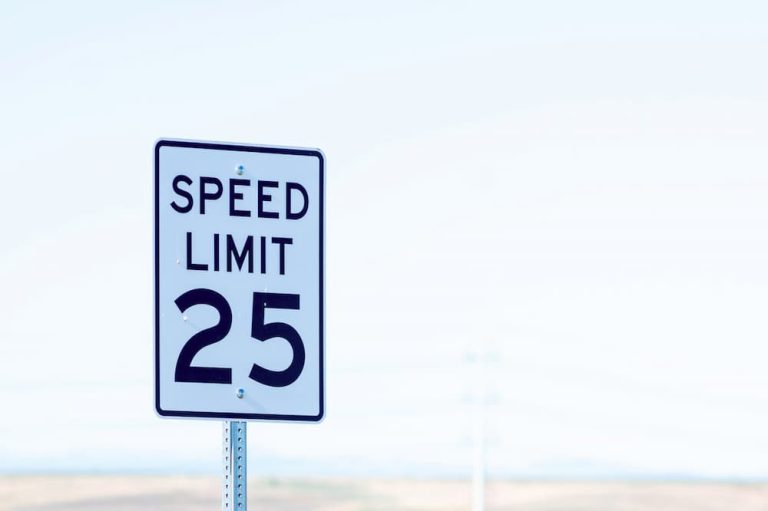Bicycle Laws In Florida | Cycling Laws In The State Of Florida In 2023
The Florida bicycle laws are divided into 8 categories: regulations, sidewalk riding, lighting, roadway position, left turns, signaling turns, and headsets. The final category is the penalties that will be charged to the ones that violate these laws.
The information provided in this article is not legal advice. None of our writers are lawyers and they also do not provide legal advice. The information published in this blog is provided for entertainment and educational purposes only. We do our best to explain the rules and regulations in easy to understand language. Although we do extensive research to make sure our information is accurate and useful, our synopsis may not reflect current legal developments or address your situation. We disclaim all liability for actions you take or fail to take based on any content on this article.
Contents
General Regulations

- For the safety of riding and avoid falling into unwanted penalties, a rider or responsible adult should oblige the traffic rules applicable under the bicycle laws. All cyclists must follow certain obligations and regulations of their particular location if any. This includes traffic signals and warnings as well.
- They must maintain the necessary fitness for bicycle seats and wear appropriate safety gear for protection.
- The rider cannot take more passengers than the allowed number instructed for the model or design of the bicycle. They must ride the bike while holding it with at least one hand.
- Responsible guardians or parents must teach the children about traffic rules and bicycle regulations to ensure their safety on the road and instill a sense of responsible citizen in them.
- The people responsible for selling bicycles should ascertain the safety of the brakes on the cycle, so it allows the rider to stop within 25 feet from a speed of 10 miles per hour while being on a dry, level, clean pavement.
- Manufacturers must ensure the placement of an identifying cast or number plate on the cycle frame for identifying the cycle.
Recent Additions in the Regulation
- A rider must ride a vehicle – bicycle or electric cycle with a proper seat attached to the frame and not ride it otherwise unless the vehicle is designed to ride without a seat by the manufacture for a purpose.
- An electric bicycle can be considered a vehicle similar to a bike. It can be ridden on streets, highways, sidewalks, and sidewalk areas under the local government’s jurisdiction. The right to use a bicycle path, multiuse path, or trail network will depend on the decision of the state or local authority, and the cyclists must abide by the regulations as instructed.
This bill will be enacted from July 1, 2021, under Florida’s Legislature.
Sitting Regulations
- Under the rights of riding a bicycle as a human propelling vehicle, a person cannot carry more than the designated number of persons in the cycle for which it is set and manufactured.
- An adult rider can carry a child by adequately securing them with his backpack or sling in the vehicle.
- The rider should not carry a child in his vehicle who is more than 4 years old, weighs 40 pounds or less, and protect the kid from the moving parts of the bicycle.
- A rider cannot leave a child unattended on the child seat or in the cycle carrier when he or she is not controlling the vehicle.
Florida Bicycle Helmet Law
- A bicycle rider under the age of 16 has to wear a helmet properly fitted or fastened securely around his or her head following the Federal Safety Standard.
- The responsible seller or shops cannot lease or rent a bicycle to a child under age 16; who does not possess a bicycle helmet.
- He or she can sell, rent or lease the bicycle to a child or minor if he provides them with a helmet or ensures the possession of the helmet with them.
- The failure of a guardian or parents to make their children wear a helmet may not serve as evidence of negligence or contributory negligence.
- The Law enforcement authority can show a warning, security brochure or even issue a fine to the rider for violating the law.
- Upon considering definite proof and consideration, the court can dismiss the penalty if it is a first-time offense for the rider.
- Violating all these carrier and helmet regulations and not abiding by the laws would result in a punishable offense according to section 16 of article 316.2065 and 18.
However, the court may waive, reduce, and suspend the fine upon considering the inability and reasons of the rider under its jurisdiction.
Sidewalk Riding
When a cyclist rides on crosswalks or sidewalks, he or she shall maintain the right-of-way to any pedestrian. He or she shall provide audible signals before overtaking and passing any pedestrian.
Lighting
- When a person cycles after sunset or before sunrise, he or she should set white lights on the front and the rear of the cycle frame visible from a distance of at least 500 feet. Which also
- The rider should also include reflectors on the rear, each displaying a red light visible from a distance of 600 feet from the back.
- If a cyclist wants to install additional lighting, they can add it anytime.
A law enforcement official can show him/her a warning or charge fine for not following the proper lighting installation and not using it when necessary as a safety measure for pedestrians and riders.
Roadway Position
- While operating a bicycle on a roadway, a person should maintain a minimum speed following the speed of traffic situation.
- The rider should ride in the existing lane marked for bicycle use on certain necessary conditions. If no route is marked for bicycle use, he or she can take the right-hand curb or edge of the roadway.
- Nevertheless, one should not overtake or pass another bicycle approaching the same direction and towards an intersection or into a private driveway.
- The rider should follow a limited speed and required distance from other vehicles to avoid possible conflicts and accidents in single-line lanes.
- The cyclist cannot use other paths or roadways set aside for the exclusive use of bicycles on the road during heavy traffic or on the highway.
Left Turns
- A cyclist can use the entitled lane for a left turn and must follow the signals while crossing the paths.
- While being in motion, the cyclist must check the signals and traffic signs and proceed with it upon considering the red and green light to ensure safety. Following the traffic control devices is mandatory for taking turns and passing from one side to another on the road.
- During the usual turn, a rider should follow the right-most side of an intersection and get closer to the curb or edge of the sideway.
Signal Turns
- When a bicyclist decides to take a turn, he/she must give a signal of intention to show the intention of turning from the last 100 feet before turning.
- During the time of using both hands for controlling the vehicle, the constant sign is not needed.
- The cyclist can use the left hand and arm upward or extend the right hand and arm horizontally to the right side of the bicycle to display the signal to turn right.
- The Cyclists have the advantage to choose between the right-way of signaling, one with their left hand and arm upright and another extending the right hand and arm horizontally to the right side.
Headsets
Using headsets during cycling may hinder the audibility of the cyclists. They must avoid wearing headphones, headsets, or any other musical devices not used for a hearing aid. This can interrupt their audibility to traffic noises and honks while riding on the road.
Violation Penalties
There are specific civil penalties for not abiding by the rules on moving, i.e., helmet rules, lighting installation at night, or not having brakes. The penalty for these violations will subject to $32 as a fine.
Violating the ‘moving’ laws regarding taking the wrong lane, overtaking, and ignoring stop signs, will cost $52 as penalization.
Local Ordinances
Every state or local government has the authority to adopt decrees and regulations to control the bicycle laws in the area. They can have their individual licensing and registration process for identifying and allowing for a ride. They have the control and authority to prohibit sidewalk riding and initiate a policy to inform locals by providing copies of the local ordinance.
Frequently Asked Questions
Who is required to wear a bicycle helmet in Florida?
Both cyclists and passengers under the age of 16 must wear a bicycle helmet. A helmet that meets the federal safety standard for bicycle helmets should be properly fitted and is fastened securely upon the head by a strap. The term passenger also refers to a child who is riding in a trailer or semitrailer attached to a bicycle, or in a child seat.
Is it illegal to ride a bike on the sidewalk in Florida?
No, it is not illegal to ride a bike on the sidewalk in the state of Florida. Following section 316.2065 of Florida Statutes, bicycle riding is totally permitted on sidewalks considering the bicycle as a vehicle propelled by human power. Anyhow, it also states that you need to provide audible signals before passing or overtaking any pedestrian. Again, you are also bound to follow other statutes while riding a bike on the sidewalks.
Are bicycle helmets required in Florida?
No, adults are not required to wear a helmet when riding a bicycle in Florida. Technically if you’re above the age of 16, you don’t need to wear a helmet. But children under 16 have to wear a helmet while riding a bike. In fact, both passengers and riders under 16 need to have helmets.
What are the Florida laws on bicycle lights?
The Florida laws on bicycle lights apply to any bicycle operating between sunset and sunrise. The rules are the following:
- You need to have a lamp in front of your bike that can be seen from at least 500 feet away while projecting white light.
- The rear light must project red light, and it should be seen from a minimum of 600 feet away.
- There should be a red reflector on the rear side of the bike that can be visible from a minimum of 600 feet away.
You can also enhance your bike’s lighting with additional lighting.
What are some common moving violations for bicyclists in Florida?
Here are some common moving violations for bicyclists in Florida:
- Running a stop sign or red light
- Riding against traffic
- Riding more than two abreast in the road or bike lane, unless on a bike path
- Failing to yield the right-of-way when entering a roadway or to pedestrians in crosswalks
- Riding on the wrong side of the road
Conclusion
Following bicycle laws in Florida not only makes one a good citizen but also helps them keep safe from hazards. The possibility of getting into an accident is higher when someone doesn’t abide by the laws. This is why Florida residents must educate themselves on these regulations before operating one.






